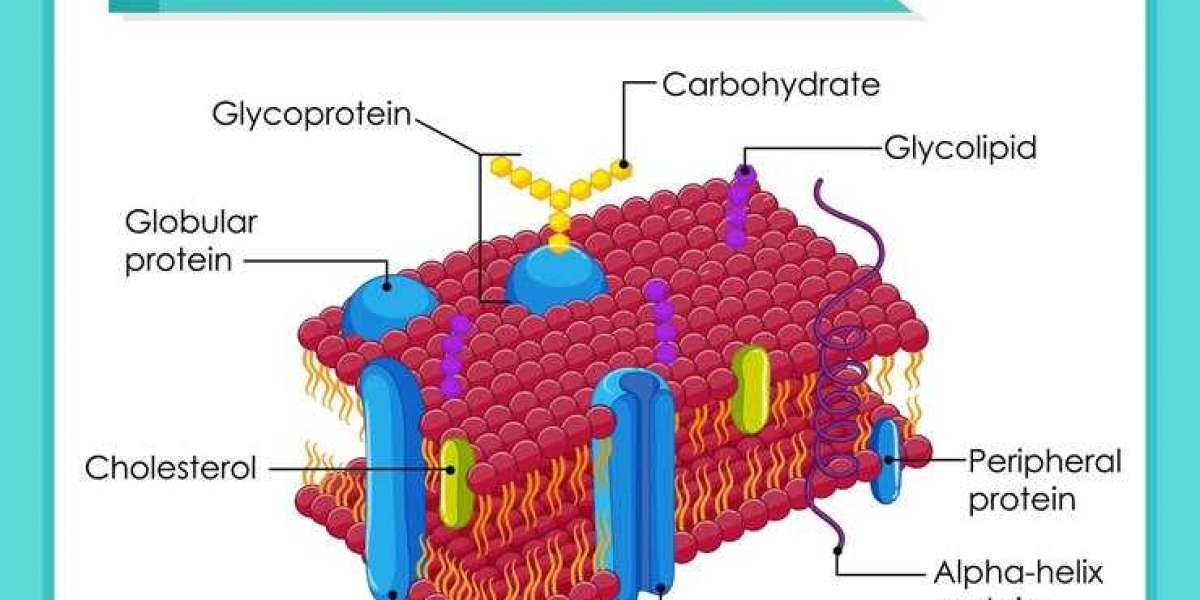Amniotic membranes have garnered significant attention in the medical field due to their unique properties and versatile applications. From wound healing to eye surgeries, these membranes are proving to be a game-changer in regenerative medicine. In this article, we’ll dive into the science behind amniotic membranes, exploring their structure, benefits, and the various ways they are being used in modern medicine.
1. What is an Amniotic Membrane?
The amniotic membrane is the innermost layer of the placenta, which surrounds and protects the fetus during pregnancy. It consists of a thin, transparent tissue that is rich in proteins, growth factors, and stem cells. This unique composition makes it an ideal material for various medical applications, particularly in the field of regenerative medicine.
a. Structure of the Amniotic Membrane
The amniotic membrane is composed of three main layers:
- Epithelium: The outermost layer that acts as a barrier and helps in cell regeneration.
- Basement Membrane: The middle layer that provides structural support and anchors the epithelium to the underlying tissue.
- Stroma: The innermost layer, which contains a dense network of collagen fibers and proteins that promote healing and reduce inflammation.
Each of these layers plays a crucial role in the amniotic membrane’s ability to support tissue repair and regeneration.
2. The Benefits of Amniotic Membranes
Amniotic membranes offer a range of benefits that make them highly valuable in medical treatments:
a. Anti-inflammatory Properties
One of the most significant advantages of amniotic membranes is their anti-inflammatory properties. The presence of cytokines and other bioactive molecules in the membrane helps reduce inflammation at the site of injury, promoting faster healing and minimizing pain for patients.
b. Anti-scarring Effects
Amniotic membranes have been shown to reduce scar formation during the healing process. This is particularly beneficial in surgical procedures where minimizing scarring is essential for both functional and aesthetic reasons.
c. Promotion of Tissue Regeneration
The membrane’s rich content of growth factors and stem cells stimulates tissue regeneration, making it an effective tool for healing wounds, burns, and other injuries. This regenerative property is also valuable in ophthalmology, where amniotic membranes are used to treat various eye conditions.
d. Antimicrobial Properties
Amniotic membranes contain natural antimicrobial agents that help protect against infections during the healing process. This is especially important in wound care, where the risk of infection can be a significant concern.
e. Pain Reduction
Patients who receive amniotic membrane grafts often report reduced pain levels, which is attributed to the membrane’s ability to soothe and protect damaged tissues.
3. Medical Applications of Amniotic Membranes
The unique properties of amniotic membranes have led to their use in a wide range of medical applications. Here are some of the key areas where amniotic membranes are making a difference:
a. Wound Healing
Amniotic membranes are widely used in wound care, particularly for chronic and non-healing wounds such as diabetic ulcers, pressure sores, and burns. The membrane acts as a natural barrier, protecting the wound from infection while promoting faster healing and reducing scarring.
b. Ophthalmology
In ophthalmology, amniotic membranes are used to treat a variety of eye conditions, including corneal ulcers, conjunctival defects, and chemical burns. The membrane is applied to the eye’s surface, where it helps regenerate damaged tissue, reduce inflammation, and improve overall eye health.
c. Surgery
Amniotic membranes are increasingly being used in surgical procedures to promote healing and reduce complications. They are often used as grafts in reconstructive surgeries, where they help regenerate tissue and minimize scarring. The membrane’s anti-inflammatory and antimicrobial properties also make it a valuable tool in preventing post-surgical infections.
d. Dentistry
In dentistry, amniotic membranes are used in procedures such as periodontal surgery and dental implants. The membrane’s ability to promote tissue regeneration and reduce inflammation makes it an effective material for enhancing healing and improving patient outcomes.
e. Orthopedics
In orthopedic medicine, amniotic membranes are used to treat joint and tendon injuries. The membrane’s regenerative properties help repair damaged tissues, reduce inflammation, and improve mobility in patients with musculoskeletal conditions.
4. The Science Behind Amniotic Membrane Therapy
The effectiveness of amniotic membrane therapy lies in its ability to harness the body’s natural healing processes. When applied to an injury or surgical site, the membrane releases growth factors, cytokines, and other bioactive molecules that stimulate cell proliferation, tissue regeneration, and immune modulation.
a. Stem Cells and Growth Factors
The presence of stem cells in the amniotic membrane is one of its most significant advantages. These stem cells have the potential to differentiate into various cell types, making them a powerful tool for repairing and regenerating damaged tissues. Additionally, the membrane’s growth factors help accelerate the healing process by promoting cell division and tissue formation.
b. Immunomodulatory Effects
Amniotic membranes also have immunomodulatory effects, meaning they can modulate the immune response to promote healing without triggering an excessive inflammatory reaction. This is particularly important in preventing chronic inflammation, which can lead to complications and slow down the healing process.
c. Biocompatibility
One of the reasons amniotic membranes are so effective in medical applications is their biocompatibility. The membrane is naturally designed to support and protect human tissues, making it an ideal material for grafts and implants. Patients receiving amniotic membrane therapy are less likely to experience rejection or adverse reactions, making it a safe and effective treatment option.
5. Future Prospects of Amniotic Membranes in Medicine
The future of amniotic membrane therapy looks promising, with ongoing research and development aimed at expanding its applications. As scientists continue to explore the full potential of amniotic membranes, we can expect to see new and innovative uses for this remarkable material.
a. Regenerative Medicine
In the field of regenerative medicine, amniotic membranes are being studied for their potential to repair and regenerate damaged organs and tissues. This could have significant implications for treating conditions such as heart disease, liver failure, and spinal cord injuries.
b. Personalized Medicine
As our understanding of amniotic membranes continues to grow, there is potential for developing personalized therapies tailored to individual patients’ needs. This could involve using amniotic membranes in combination with other advanced treatments, such as gene therapy or stem cell therapy, to achieve optimal outcomes.
c. Advanced Wound Care
Researchers are also exploring ways to enhance the properties of amniotic membranes for advanced wound care. This could include developing new formulations or combining the membrane with other bioactive materials to create more effective wound-healing therapies.
6. Conclusion: The Transformative Power of Amniotic Membranes
Amniotic membranes represent a powerful and versatile tool in modern medicine, offering a range of benefits that make them invaluable in treating various conditions. From wound healing to ophthalmology and beyond, the science behind amniotic membranes is unlocking new possibilities for patient care and improving outcomes across the board. As research continues to advance, the potential of amniotic membranes in regenerative medicine and other fields is only beginning to be realized.









